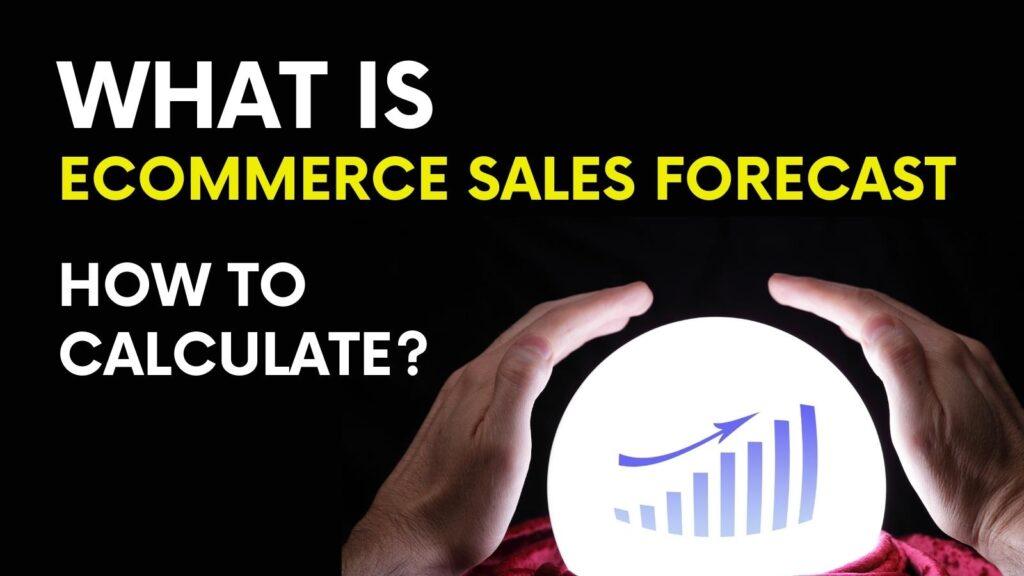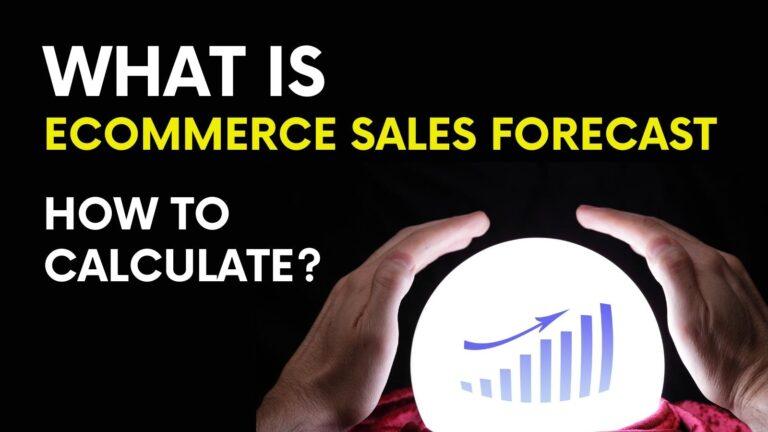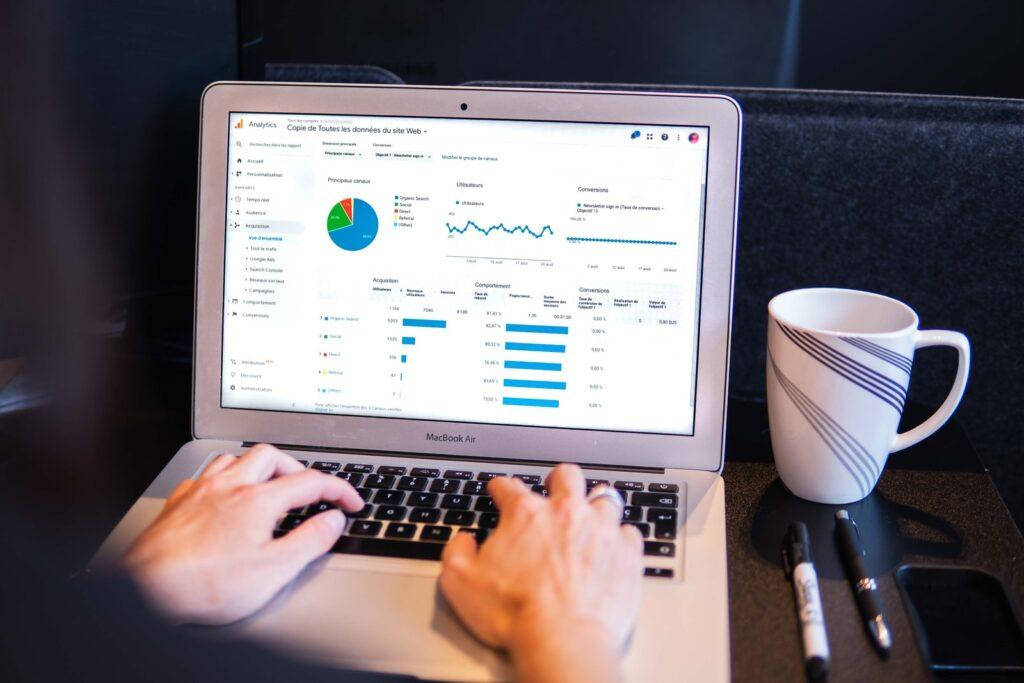There’s no lie to this. We all have seen and can testify to the substantial opportunities and risk management that e-commerce sales forecast has attributed to every person in the marketing system.
E-commerce forecasting has become a major component of E-Commerce itself, and if you ask me, it has come to a stage where they go hand in hand.
What is the E-commerce Sale Forecast?
Imagine a scenario where you predict your business’s incoming and outgoing money. In such a case, you can anticipate opportunities, identify them, and manage risks. It is called a sales forecast.

An E-commerce sales forecast is defined simply as examining and estimating the management of cash flow for the future. It is the ability to foresee whether danger or success in your business and prepare for it. And for what reason?
To:
- Boost business planning, management, and budgeting.
- Calculate the cost and revenue of businesses accurately so has to foretell their long-term and short-term performances
- Assist in alerting buADDRESSsinesses early about dangers in their sales so they can correct them before it’s late.
And many more!
How to Calculate E-commerce Sales Forecast
Calculating an e-commerce sales forecast could be a bit arduous, although some methods are straightforward. Some people use formulas, while others do more of the data management and analysis.
Below, we have compiled a few methods for calculating the e-commerce sales forecast. Make sure to carefully study them and hit the jackpot in your sales and marketing!
Figure Out Your Sales Period
Conclude on what period of the week, month, or year (according to how you want it) you choose to calculate. Once you have concluded, ensure you regularly record your data at that chosen period. Also, decide on what category you want to forecast.
Track Your Business’s Data
Keeping track of your business data is essential for e-commerce sales forecasts. CRM, also known as Customer Relationship Management System is basically configured to estimate sales forecasts, understand other business data, and best analyze customers’ preferences. Therefore, it is most recommended to ease your work.
To calculate financial business data every month, you must subtract the returned or canceled sales from the actual sales. Additionally, incorporating regular dashboard demos into your CRM strategy can help you visualize and interpret this data effectively.
Analyze Your Competitors’ History
This is often recommended for new online businesses. So a newborn business will ideally not have a business history. Yes. So the alternative is to analyze that of your competitors.
You can use sites like Zoho and Axesor to trail the invoice of your competitors if they are private. If they are not, then your work has been reduced. Just go on their website and get it.
Analyzing your competitor’s invoice gives you the highest chance of knowing how much you will make. Did you just read that it gives the highest chance? Please, unread that. It determines how much you are going to earn! However, you would need to thoroughly study their invoice to accurately determine your earnings.
Use Statistical Data
You can use the statistical data of sales channels online. The sales volume from affiliates, the standard number of people who shop through your Facebook ads, Google Ads, Adsy, and the open sales from email marketing in your category. These are the statistics we are discussing.
If you base your sales on any of the listed statistics above, you can easily estimate how much you will make at the end of your sales. It’s this simple. Your Facebook Ad is calculated to be open to 50,000 Facebook users. Therefore, you can estimate that 50 or more people will purchase your product or service. With this, you can calculate how much you would make for your sales through Facebook Ads. The same thing goes for other marketing or advert sites.
Use a Forecasting Formular
The formulas for calculating e-commerce sales forecasts vary. All you need to do is find the formula that works accurately for your business and, most importantly, is easier for you to use.
Here are three sales forecasts formulas you should consider:
Historical Forecasting
This method uses the rate at which sales increase over time and the results from the previous sales progression. To calculate this, the formula is the previous month’s sales x velocity = additional sales;
Then, additional sales + the previous month’s rate = The sales forecast for the next month.
Bottom-up Approach

The bottom-up approach helps you calculate how many customers a company can reach. The formula is:
The estimated amount of customers × Average value of customer purchases. This method is mostly recommended.
Opportunity stage forecasting
This method uses the close rate of a company. The formula is sales forecast = total value of current deals in the sales cycle × Close rate.
Follow up With Factors That Impact Sales
Sometimes, our actual sales could be affected by external factors. Therefore you need to effectively keep track of your total number of sales to avoid overestimation. Below are a few external factors that might affect sales:
- New market policies
- Market shift
- Competition
- Politics changes
- Economic conditions
- Increase or decrease in demand
- Internal Management decisions
When is the Appropriate Time for Sales Forecast?
It is essential to let your predictions and calculations exist side-by-side during the fiscal period when making an e-commerce sale forecast.
The sales forecast is best done every month. Doing so gives more realistic predictions about your business curve.
I recommend that sales forecasts be done consistently every month for a year. It is said that the more you forecast future sales, the less you can predict. So for the sake and benefits of your business, it is advised to develop yearly sales forecasts for 3 to 5 years after the first year of forecasting monthly.
To Wrap it Up
Predicting isn’t always easy, especially if it has to do with the future. And more importantly, if it has to do with sales.
E-commerce sales forecast comes with a lot of management. But it is always the best way out for your business.
Do not forget to use the sales forecast method that is best for you, and what else? Keep your sales forecasted, so it doesn’t get cracked and get a cast.







